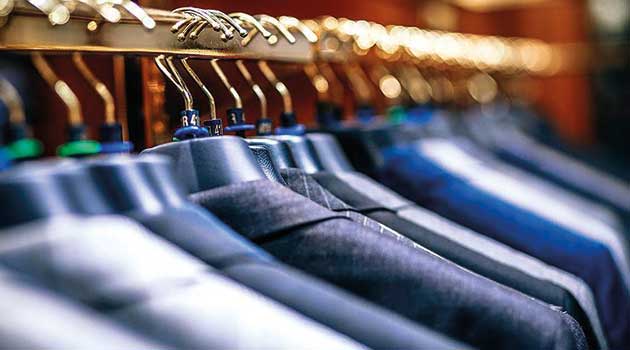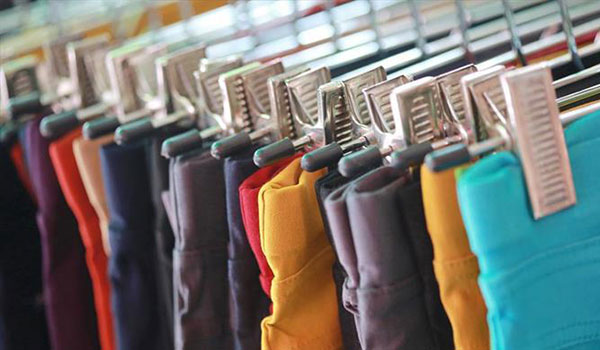Turkish Clothing Brand Uses Iran as Production HubLC Waikiki has already placed an order with an Iranian company to produce garments labeled “Made in Iran” and plans to manufacture €20 million worth of garments, most of which will be exported to the Turkish company’s regional branches The joint project is estimated to create about 5,000 jobs in Iran.
Turkish company LC Waikiki, otherwise known as LCW, has become the first major foreign apparel manufacturer to officially start cooperation with domestic garment players.
Speaking to Financial Tribune, Director General of Textile and Clothing Department at the Ministry of Industries, Mining and Trade Afsaneh Mehrabi said the Turkish company has been in negotiation with Iran’s Ministry of Cooperatives, Labor and Social Welfare and the Ministry of Industries, Mining and Trade for the past eight months and the Turkish side has so far surveyed over 70 apparel factories and manufacturing units in Iran.
Iranian clothing company Ronak Jean has been shortlisted. LCW has already placed order and the Iranian company’s production line has been making clothes for the Turkish brand labeled “Made in Iran” tags for the past few months.
“Most of the apparel ordered by LC Waikiki are produced [in Iran] for export purposes and only a small share has been considered for distribution in domestic stores,” Mehrabi said.
The first phase of the collaboration will see LCW place orders with selected Iranian apparel makers worth around €20 million in the next year and a half.
Mehrabi added that planning and implementation of next phases depend on the result and success of the first phase, but the ultimate goal is the establishment of an independent apparel factory in Iran by LC Waikiki.
All the exports will be done under the parent company’s supervision and management. The apparel, labeled “Made in Iran” under LC Waikiki brand, will be exported to LCW branches in other countries.
According to Mehrabi, considering Iran’s geographical position, the export destinations are highly likely to target Russia, its neighbors and regional countries such as Iraq.
The official noted that the whole project is expected to create about 5,000 jobs in Iran.
LC Waikiki was launched in France in 1988. After 1997, it operated as a Turkish brand under the umbrella of LC Waikiki Magazacilik Hizmetleri Ticaret A.S.
Today LC Waikiki trades in 821 stores in 36 countries, offering a wide range of clothing for men, women and children at reasonable prices.
Steps have been taken by the Ministry of Industries, Mining and Trade recently to revive the domestic apparel industry and regulate clothing imports.
The ministry has decided that foreign brands willing to sell their products in the Iranian market are required to directly apply for permits to acquire representative sales outlet in Iran without taking recourse to middlemen.
In addition, the representatives are required that 20% of the value of their imports (in rial terms) be produced inside Iran during the first two years of their business activities. After two years, the authorized representatives are obliged to export 50% of the apparel produced domestically.
Deputy minister of industries, mining and trade, Yadollah Sadeqi, recently said 14 companies have accepted the new regulations and conditions and they are in the process of registering their representatives.
Pressing Need to Counter Smuggling
Iran’s apparel sector and market suffer from illegal imports. In fact, clothing tops the list of goods smuggled into Iran.
Textile, Apparel and Leather Industry Organization, affiliated to the Industries, Mining and Trade Ministry, says about 90% of foreign clothing are smuggled into the Iranian market.
A member of the board of directors of Iran Textile Exporters and Manufacturers Association put the value of Iran’s apparel market at $11 billion.
According to the Research Center of Tehran’s Apparel Union, Iranian apparel production meets 40% of domestic demand and apparel smuggled into the country is worth over $6.2 billion. Trade Promotion Organization’s figures also confirm the research center’s statistics.
A forum recently held at Tehran Chamber of Commerce, Industries, Mines and Agriculture attributed rampant apparel smuggling in Iran to high prices, inattention to current fashion trends and neglect of branding.
Golnar Nasrollahi, the Ministry of Industries, Mining and Trade’s advisor for textile, apparel and leather industries, said Iran’s annual apparel demand stands at around 510,000 tons per year, while the country’s production capacity is about 300,000-320,000 tons.
Nasrollahi, who was addressing the same forum, added that there are 1,500 clothing production units and 15,000-16,000 cooperative units in Iran, creating direct jobs for 500,000 people.
According to Hassan Nilforoushzadeh, representative of the Association of Iran Textile Industries, domestically-made textile products suffer from high prices, which is partly due to reliance on imports for the supply of raw materials. He added that 11.7% of the end prices pertain to value added tax.
Nilforoushzadeh noted that Iran’s domestic demand for cotton is 150,000 tons per year, while only 40,000 tons are produced domestically and the rest is imported.
“Currently, there is a 10% tariff on cotton imports,” he said.
Iran exported 3,800 tons of apparel worth $46.2 million in the last fiscal year (March 2016-17), up 2.6% in volume and 3.9% in value when compared to the previous year, according to Iran’s Chamber of Commerce, Industries, Mines and Agriculture’s news portal.
Join Us Now
Join 80.000 Middle East and North Africa Textile Professionals who get Kohan Textile Journal’s FREE Newsletter…





















